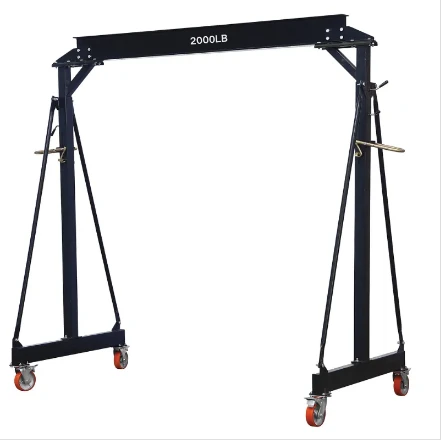gantry lift system
Understanding Gantry Lift Systems An Overview
Gantry lift systems have become increasingly popular in various industries due to their versatility and efficiency in material handling and transportation tasks. These systems are designed to lift and move heavy loads, making them essential in sectors such as manufacturing, construction, and warehousing. This article explores the components, advantages, applications, and considerations associated with gantry lift systems.
Components of a Gantry Lift System
At its core, a gantry lift system consists of several key components the gantry frame, lifting mechanism, wheels or tracks, and control systems.
1. Gantry Frame The frame is typically constructed from robust materials like steel or aluminum, providing the necessary strength and stability to support heavy loads. The design is usually characterized by a rectangular or square structure with vertical posts and horizontal beams, which allows for the lifting mechanism to travel along its length.
2. Lifting Mechanism The lifting mechanism can vary, commonly employing electric hoists or hydraulic lifts to raise and lower loads. The choice of lifting mechanisms often depends on the weight of the materials being handled and the specific requirements of the operational environment.
3. Mobility Features Gantry systems are often equipped with wheels for mobility or designed to fit on tracks to assist in movement across specific areas. This mobility helps facilitate efficient material handling over designated routes within facilities.
4. Control Systems Modern gantry lift systems come with advanced control panels and remote controls. These systems allow operators to manage the lifting and movement operations safely and effectively, minimizing the risk of injury and increasing productivity.
Advantages of Gantry Lift Systems
The benefits of implementing gantry lift systems in operations are numerous
1. Flexibility One of the standout features of gantry lifts is their versatility. They can be positioned and relocated as needed, making them suitable for various projects without permanent installation.
2. Cost-Effective Compared to traditional cranes, gantry lift systems often represent a more cost-effective solution. Their relatively lower initial investment and maintenance costs make them attractive options for businesses looking to optimize their budgets.
gantry lift system

3. Safety With proper training and adherence to safety standards, gantry lift systems improve workplace safety. They reduce the likelihood of injury associated with manually lifting heavy items, effectively mitigating ergonomic risks for workers.
4. Customization Gantry systems can be tailored to meet specific operational needs. Whether it is adjusting the height, width, or additional features like powered wheels, these systems can be designed to fit the unique requirements of different tasks.
Applications of Gantry Lift Systems
Gantry lift systems find applications across a multitude of industries. In factories, they facilitate the movement of materials along assembly lines. In construction, gantries support lifting tasks during equipment installation. Additionally, they serve in warehouses for loading and unloading operations, optimizing space and improving inventory management.
Considerations When Choosing a Gantry Lift System
When selecting a gantry lift system, organizations should consider several factors
1. Load Capacity Assess the maximum weight the system will need to handle to ensure the selected gantry is suitably rated.
2. Height and Reach Consider the necessary lifting height and horizontal reach required for specific applications.
3. Environment Take into account the working environment, including factors like space availability, surface type, and potential hazards.
4. Regulations and Standards Ensure compliance with local safety regulations and industry standards to maintain a safe working environment.
In conclusion, gantry lift systems are invaluable assets in modern industrial operations. Their blend of flexibility, safety, and cost-effectiveness makes them an ideal choice for a wide range of lifting and material handling tasks. By carefully considering the specific needs of their operations, businesses can effectively leverage these systems to enhance productivity and safety in their workplaces.
-
Unlock Seamless Relocation with Our Heavy Equipment Moving ExpertiseNewsJun.06,2025
-
Unleash Unrivaled Flexibility with Our Adjustable Gantry CraneNewsJun.06,2025
-
Unleash Heavy-Duty Efficiency with Our Industrial Gantry Crane SolutionsNewsJun.06,2025
-
Revolutionize Steel Handling with Our Magnetic Lifter RangeNewsJun.06,2025
-
Master Equipment Mobility with Premium Machinery Mover SolutionsNewsJun.06,2025
-
Elevate Your Material Handling with Magnetic Lifter TechnologyNewsJun.06,2025
-
YS Permanent Lifting Magnets: The Smarter Way to Handle SteelNewsMay.22,2025
